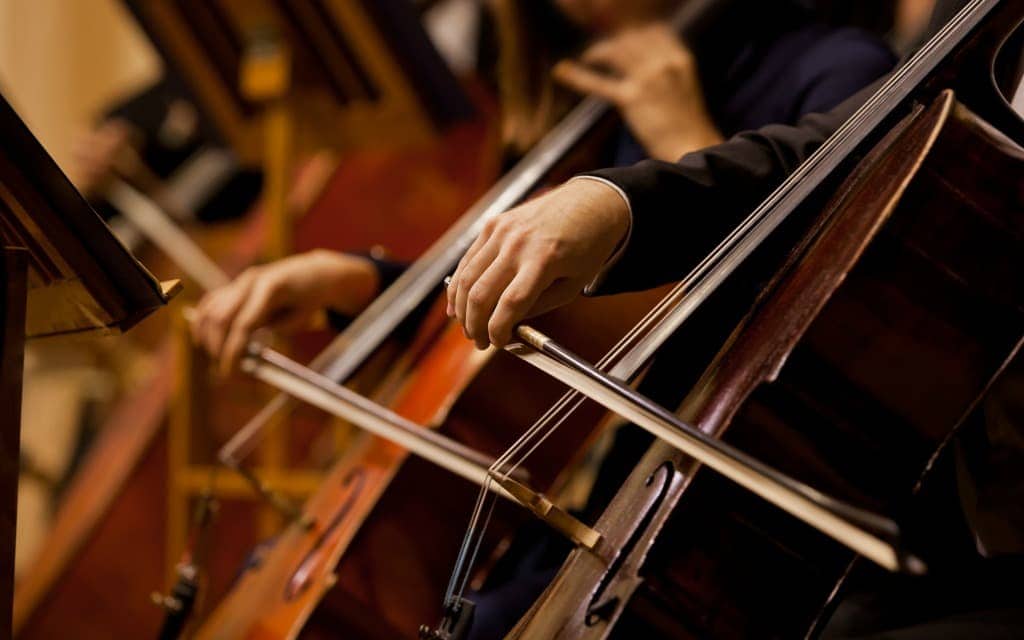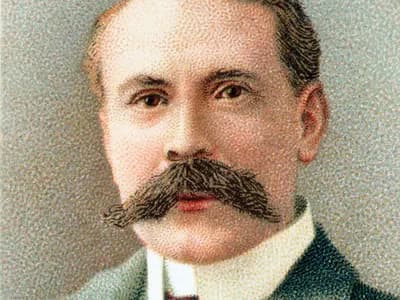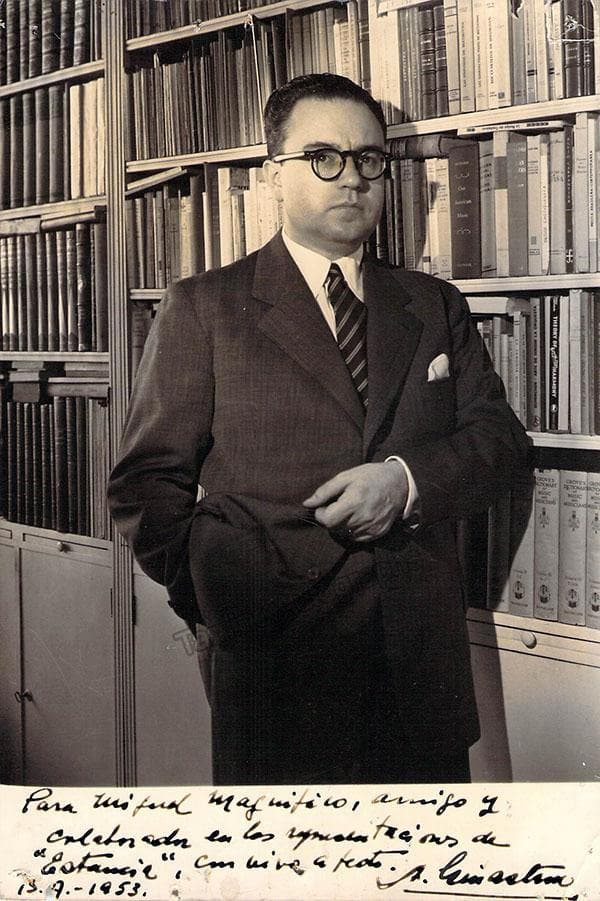Last year I wrote about what the associate principal cello does. As the person who held that position with the Minnesota Orchestra, I must admit, I often would ruminate that playing a concerto as soloist seemed easier than playing the cello solos in the orchestral repertoire.

© musiciansnet.co.uk
At least I could prepare months for that. The longer solos, like the one from Shostakovich Symphony No. 1 were somewhat easier to handle. Even if the first few notes are shaky there is at least some time during which I could settle into it. The extended featured solos in the repertoire we all know and love, such as the Overture to William Tell, and the Brahms Piano Concerto No. 2, slow movement, a principal cellist is prepared for. These are on every principal audition, and we tend to work on them like any other solo piece in the repertoire.
Johannes Brahms: Piano Concerto No. 2 in B-Flat Major, Op. 83 – III. Andante (Jenő Jandó, piano; Belgian Radio and Television Philharmonic Orchesetra; Alexander Rahbari, cond.)

Edward Elgar
But the agony of anticipation for the few notes of the solo in variation twelve of the Edward Elgar Enigma Variations, which the cellist plays totally by him or herself, or The Planets: Venus Bringer of Peace especially when you are the number two player and didn’t necessarily rehearse it, was often way out of proportion to how fleeting these phrases are in the grand scheme of things. Granted, both of these solos have long shifts or leaps to be done with exquisite sensitivity. Difficult to do if you’re trembling.
Edward Elgar: Variations on an Original Theme, Op. 36, “Enigma” – Variation 12: B. G. N. (Basil G. Nevinson) (Academy of St. Martin in the Fields Orchestra; Neville Marriner, cond.)
Gustav Holst: The Planets, Op. 32 – II. Venus, the Bringer of Peace (Saint Louis Symphony Orchestra; Walter Susskind, cond.)
I can recall berating myself for my racing heartbeat prior to the solo in Stravinsky’s Firebird Suite and mumbling silently, “It’s only 14 notes. Get a grip!” I concede it’s in a god-awful key and lies awkwardly on the cello, but it’s near the beginning of the piece and it’s over in six seconds! Look at it this way, at least you get two chances to play it. (note Joseph Johnson, principal cello of the Toronto Symphony playing it at 5:30-5:36 and 7:07-7:14) There’s another solo nearer the end but it’s a full 10 seconds (15:47-15:57.)
Stravinsky: Suite from The Firebird (1919 revision) / Peter Oundjian · Toronto Symphony Orchestra
What I’m trying to say is that after playing within the orchestra for minutes, or pages, and then the spotlight is upon you for a few seconds, it’s challenging to shine and sound like an angel. I remember thinking that every other cellist in the section must imagine they could do better. In fact, once when I was principal and we were playing the Elgar, a young whippersnapper new to the section who was sitting with me on the first stand kept whispering, “Janet. Pl-eee-ase call in sick for just one of the concerts so I can play the solos!”

Tony and Janet
During my third year of university, when I was a student at University of Toronto, so many years ago now, I became the principal cello. The U of T Orchestra that year performed the tone poem by Jean Sibelius from 1895, The Swan of Tuonela. It’s a ravishing piece, part of the Lemminäinen Suite Op. 22 and based on a Finnish legend. Both the principal cello and the mournful English horn play extended solos. I certainly hadn’t encountered the piece before. When it was time for the concert, my cello wept, soulfully depicting the heartbreak in the solos. Today after decades of cello-playing, the experience stands out in my mind. Why? Because I received quite an ovation during my solo bow, to my complete surprise. When I performed the solos, I was not unnerved. What did I know then?
Jean Sibelius: Swan of Tuonela
Making sense of this phenomenon leads me to conclude that once we are in a professional setting, the stakes are higher. Of course, the audience is larger and the expectations greater. But I believe the criticism real or imagined from our colleagues is what puts us over the edge. And somehow, each time there’s a solo it seems like a test. We anticipate the disapproval of our colleagues should we this time miss a shift or play a note out of tune—as if we as a player and as a person would be cancelled, or disdained, after one slight error. I know I was much more relaxed when I performed in another city.

Alberto Ginastera
The musicians who consistently play solos, such as the concertmaster, the solo winds, the principal trumpet, do become more inured to such ruminations one hopes. But I imagine not everyone succeeds at suppressing these negative projections. Most often, I think, colleagues are very supportive, and it’s our perception of ourselves that is coloring our interpretation. Although I remember when I became the principal for the Aspen Chamber Symphony we performed Concerto for Strings Op. 33 by Alberto Ginastera, a terrific piece with solos for all the principal string players. The cadenza for the cello is not only exposed but full of difficult double stops. During the concert, right before we performed the piece, my boyfriend at the time, the principal viola, leaned over and said, “Play out for once!” Needless to say he quickly became my ex-boyfriend.
Alberto Ginastera: Concerto per corde (Concerto for Strings), Op. 33 – I. Variazioni per i solisti (Deutsches Symphonie-Orchester Berlin; Arturo Tamayo, cond.)
So how do we combat the negative chatterbox in our heads? First, we must be prepared with the music, but after that, after we’ve played the 14-note solo a million times, what can we do to settle ourselves? Three things are keys to better equilibrium: Mental preparation is key, breathing is key, and focus is key. What helped me was visualizing playing the passage in question beautifully, concentrating on deep breaths, and thinking only about conveying the emotion of the music to the audience—that is replacing meditations such as “what will people think?” “What if I miss that shift?” to positive thoughts about the music.
I think it’s important to remember that one concert will not make or break our career or our reputation. Very often what we perceive is nothing like what the audience perceives. When we focus on how totally nerve-wracking playing principal is and are caught up in how we feel, we cannot always be the best judge of how it sounds, unless we give ourselves wholeheartedly to the music.
For more of the best in classical music, sign up to our E-Newsletter

I’ll be thinking about this as I prepare to play Mahler’s 1st next month and that very exposed bass solo in movement 3.
Hi Ed,
I’ll be thinking of you too. This goes doubly for Bass players as there are so few really exposed solos and this is one of them. Toi Toi,
All best
Janet
Hello Ed,
I’ll be thinking of you! Not too many exposed solos for the bass so this goes double for you. Toi Toi
All best
Janet
Playing orchestral piano is like this, but even more intensified. At least with the cello, you’re already playing your instrument in most of the piece you’re about to play your solo in. Pianists are not trained as orchestral musicians, and their solos are often exposed after many, many rests. My most terrifying moments as a pianist have been playing orchestral piano with major orchestras – but also the most exciting musicial experiences of my life! As one of my fellow orchestral pianist friends put it, “It’s the best seat in the house!
In the eightieths of last century for eight seasons I was the assistant principal (secondo violoncello) of the orchestra dell Teatro dell’ Opera of Rome, Italy. The principal cellist was Giuseppe Gramolini, an outstanding cellist and musician in the operatic repertoire. He never ever missed a performance evening. When asked about waiting for a specific solo he answered: “si trema.”
He died of a heart failure a week after retiring at the age of 62 .
I remember the Olympian skater, Scott Hamilton, talking about the moment you skate for the Gold. So much of our time as a musician, in our rigorous training, is spent working on technique with careful, creative repetitions focusing on what to do to create the beauty of music and how to do it. He made the comment during one of the winter games that when you walk out on the ice for the performance of a life time, it is of the utmost importance to put aside all the thought you put in about the techniques and just immerse and surround yourself with beauty of the art at hand. I am paraphrasing him but I share this with my students all the time.
Wonderful article! Thank you.
There are only a few solos for the trombone in the orchestral repertoire but the one that always gets me “spun up” is Bolero by Ravel. It’s a long wait without playing a note. The mind can go to strange places but, as you say, conveying the emotion is the thing. Ya just gotta love it! Thanks for this insightful article.